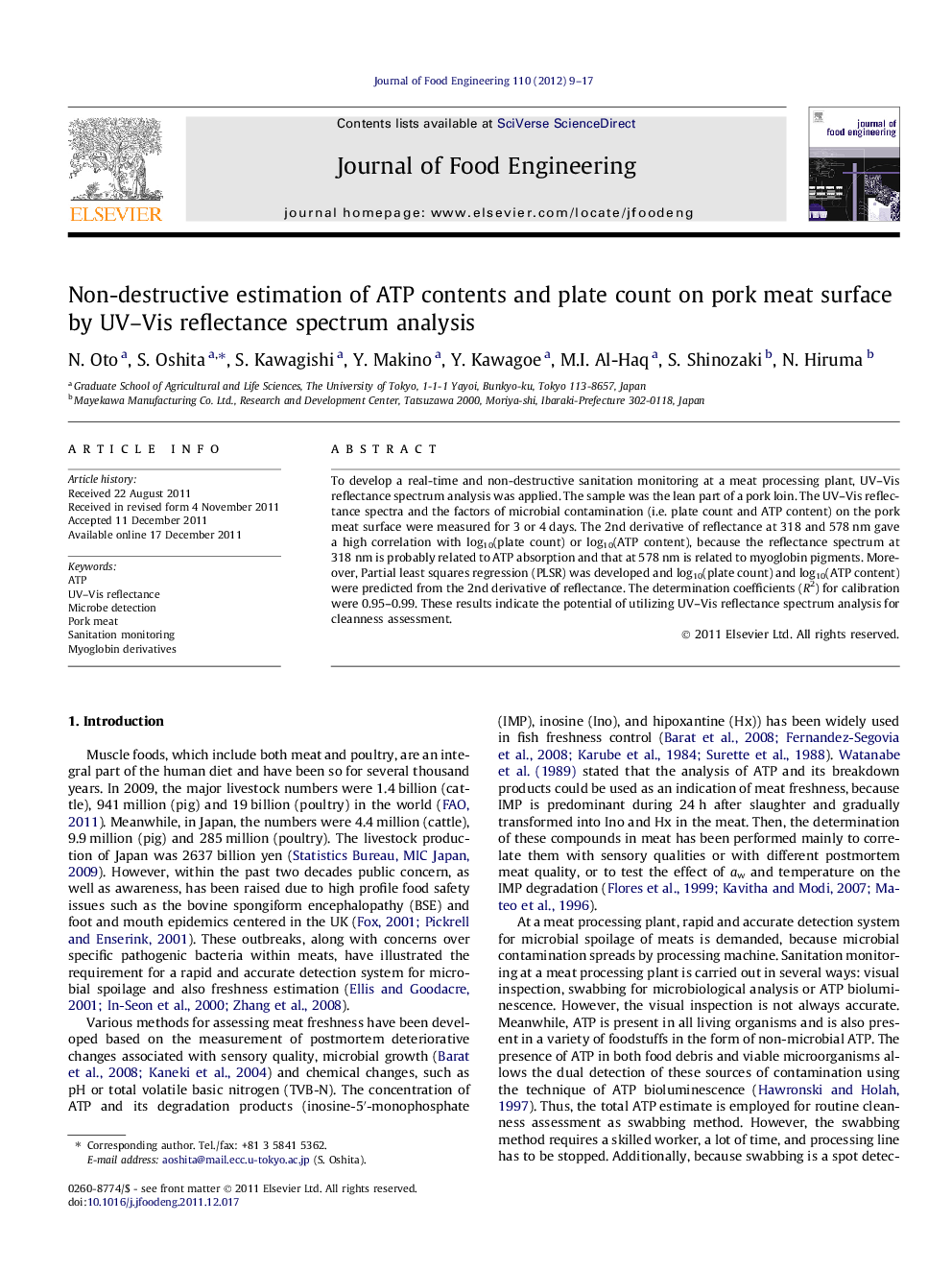| Article ID | Journal | Published Year | Pages | File Type |
|---|---|---|---|---|
| 223814 | Journal of Food Engineering | 2012 | 9 Pages |
To develop a real-time and non-destructive sanitation monitoring at a meat processing plant, UV–Vis reflectance spectrum analysis was applied. The sample was the lean part of a pork loin. The UV–Vis reflectance spectra and the factors of microbial contamination (i.e. plate count and ATP content) on the pork meat surface were measured for 3 or 4 days. The 2nd derivative of reflectance at 318 and 578 nm gave a high correlation with log10(plate count) or log10(ATP content), because the reflectance spectrum at 318 nm is probably related to ATP absorption and that at 578 nm is related to myoglobin pigments. Moreover, Partial least squares regression (PLSR) was developed and log10(plate count) and log10(ATP content) were predicted from the 2nd derivative of reflectance. The determination coefficients (R2) for calibration were 0.95–0.99. These results indicate the potential of utilizing UV–Vis reflectance spectrum analysis for cleanness assessment.
► Plate count and ATP content were predicted from the reflectance by PLSR analysis. ► Change in reflectance at 318 nm showed a possible relation to ATP absorption. ► Reflectance at 578 nm was related to the change of myoglobin derivatives. ► MLR evaluation with 318 and 578 nm was better than the individual linear regression.
